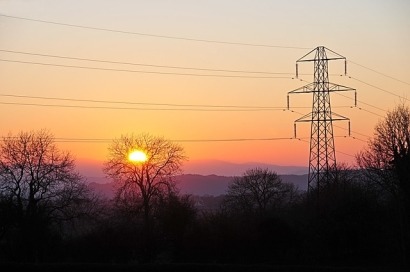
The demand for clean energy is here. Legislation like the contentious Inflation Reduction Act proves it and shows how regulating bodies want to make meaningful strides in normalizing clean energy. However, there is more to it than just funding.
Despite passages of acts like this, bipartisan support for renewable energy remains a mystery to the U.S. government and its citizens. There is not enough consistency in priorities among voters to expedite the clean grid. American culture would have to change on an individual and corporate level to work. However, longstanding relationships with fossil fuel companies and politicians make utility providers and city infrastructure planners reluctant to commit.
Nevertheless, it may not matter if Americans could magically install a one-to-one grid replacement with renewable energy because of electricity demand. Among countless influences, population increase and technological use have surged electricity demands beyond what utility companies can handle without creativity.
If current resources cannot suffice, how could an energy category with a reputation for inconsistency fit the bill? The moon comes up sooner in some states and trees stop winds in others — a U.S. power grid on renewables now could be inconsistent at best without some help.
These considerations do not devalue the efficacy of renewables. Part of the cultural shift Americans must make is utilizing numerous clean energy technologies because they work best in collaboration, not in exclusivity. The more green technologies bolster local solar panels or geothermal plants, the better, which is why renewables are not the cut-and-dry solution.
The first is an infrastructure overhaul. Plugging in an electric vehicle charger cannot happen in a household until professionals analyze the electrical to see if it could support it — this must happen nationally to fix the U.S. power grid. Evaluations like this take time, then implementing realistically priced and prompt builds is another situation. It could disrupt power supplies to entire states, costing companies their bottom line during the transition.
Once the infrastructure is operational, companies should invest in protective measures like weatherization and geohazard mitigation alongside IoT sensors for monitoring. There are countless moving parts.
Obtaining permits and other necessary bureaucratic processes are other resources for helping renewables. Any intermediaries between ideation and construction of clean grid infrastructure can find ways to streamline applications, incentivize applicants or shorten waiting times as their contribution — or even bring it up in the first place because Congress has avoided it so far.
The infrastructure must support renewable energy technology but also power auxiliary tech to make it an endurable power source. These include transmission lines, but they also comprise floatovoltic panels to expand solar farms and uncrewed aerial vehicles to self-generate wind.
Sunny cities will generate more power daily than they need, so what happens to the extra energy? Energy storage, transmission lines and smart city-building democratize electricity generation, potentially making an employer an energy provider during peak hours because they have more solar panels and biomass infrastructure.
Companies like data centers that need constant energy flow but do not use all the energy utility providers give it can transform into distributed energy resources, minimizing their energy output while helping their local area.
Microgrids are another innovation attempting to minimize the stress of installing massive grid changes. It allows small communities to run cleanly and show how the future will look with widespread enactment.
Batteries will hold extra energy, big data and smart Internet of Things technologies will read data to determine where it should go, and transmission lines take it there. Setups like this can keep houses warm during outages in a blizzard and compensate for low and high energy use. It will make households energy independent, forever transforming the nation’s relationship with energy.
The U.S. needs more than renewable energy to perfect a clean, smart grid. Scaling to meet demand is one issue and governmental advocacy is another. Though progress cannot happen at the pace desired by environmentalists, it is happening and optimism for a green nation is rational with time if the U.S. understands all the components that add up to a sustainable grid.

